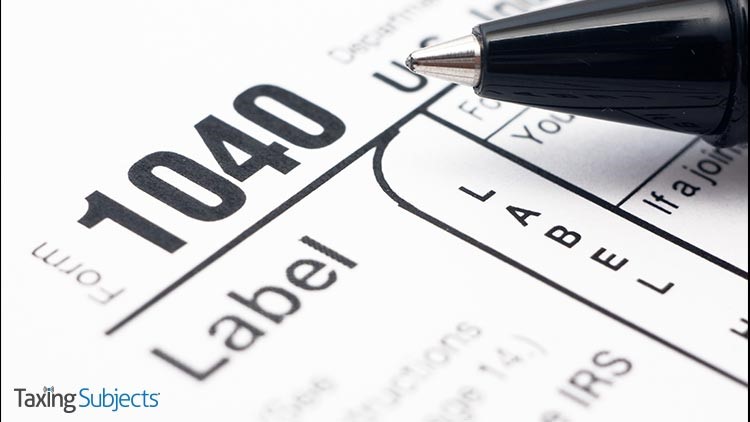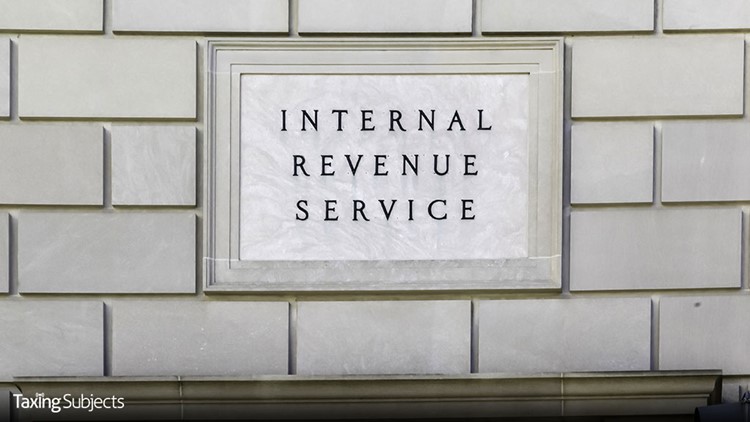by Ameritax | Jan 26, 2021 | Tax Tips and News
No matter what strategy taxpayers use to get their income taxes filed, gathering critical documents now can help make this tax season headache-free.
No matter whether taxpayers do their own taxes or employ the services of a tax professional, rounding up necessary records such as W-2s, 1099s, receipts, canceled checks and other documents can mean the difference in supporting claims of income, deductions or credits – or not.
The Internal Revenue Service says taxpayers should gather all their year-end income documents now so they can file a complete and accurate 2020 tax return and avoid a delay in receiving any refund.
Most taxpayers will get some sort of income documents near the end of January. These can include:
- Forms W-2, Wage and Tax Statement
- Form 1099-MISC, Miscellaneous Income
- Form 1099-INT, Interest Income
- Form 1099-NEC, Non-Employee Compensation
- Form 1099-G, Certain Government Payments; like unemployment compensation or state tax refund
- Form 1095-A, Health Insurance Marketplace Statements
Need More Information? Go Online
Taxpayers can access the latest information available about their federal tax account and most recent tax returns by using a secure and convenient tool on the IRS website. It’s the most direct way to get information from last year’s returns.
The IRS says in the coming weeks, individuals with an account on IRS.gov/account will be able to view the amounts of the Economic Impact Payments they received as well as the latest information available about their federal tax account.
Eligible individuals who did not receive the full amounts of both Economic Impact Payments can claim the Recovery Rebate Credit on their 2020 federal tax return. But in order to claim the full amount of the Recovery Rebate Credit, taxpayers will need to know the amount of the Economic Impact Payments they actually received.
For more information visit Secure Access: How to Register for Certain Online Self-Help Tools and learn how to create an account or how to reset the username or password.
Reminder: Unemployment Compensation is Taxable
Millions of Americans got unemployment compensation in 2020 – many of them for the first time. But it’s not free money. Such compensation is indeed taxable and must be included as gross income on their tax returns.
Taxpayers who got unemployment compensation during 2020 should receive a Form 1099-G showing their unemployment income. Taxpayers can elect to have federal taxes withheld from their unemployment benefits or to make estimated tax payments, but many do not make that choice.
In that case, taxes on their benefits will be paid when the 2020 tax return is filed. Therefore, taxpayers who did not have tax withheld from their payments could see a smaller refund than expected or even have a tax bill due.
Those who get a Form 1099-G for unemployment compensation they didn’t receive should contact their state tax agency and ask for a corrected Form 1099-G. The IRS says states shouldn’t issue Forms 1099-Gs to taxpayers they know to be identity theft victims involving unemployment compensation.
Victims of identity theft involving unemployment compensation should not file an identity theft affidavit with the IRS.
More information on taxable unemployment compensation can be found in Tax Topic 418, Unemployment Compensation, or in Publication 525, Taxable and Nontaxable Income, on IRS.gov.
Some Can Use 2019 Income for EiTC
Taxpayers who had income under $56,844 in 2020 may be eligible to claim the Earned Income Tax Credit. The IRS EITC Assistant can help determine who is eligible for the credit.
The EITC can be worth as much as $6,660 for a family with children or up to $538 for taxpayers without a qualifying child.
This tax season there’s a new rule that can help people affected by a job loss or a change in income in 2020. Under the COVID-related Tax Relief Act of 2020, taxpayers can elect to use their 2019 earned income to figure the credit if their 2019 earned income is more than their 2020 earned income.
The same is true for the Additional Child Tax Credit. For details, see the instructions for Form 1040 or Publication 596, Earned Income Credit.
Get Help Online
IRS tax help is available 24 hours a day, seven days a week on the official IRS website, IRS.gov. That’s where people can find answers to their tax questions and resolve tax issues online from the safety of their homes. The Let Us Help You page can help to answer most tax questions while the IRS Services Guide links to other important IRS services.
– Story provided by TaxingSubjects.com
by Ameritax | Jan 23, 2021 | Tax Tips and News
The Internal Revenue Service closed out the week by reminding taxpayers that receiving a tax refund by direct deposit is faster and more flexible than traditional paper checks, even for those who do not currently have a bank account. To help convince the remaining 20 percent of taxpayers to make the jump to direct deposit, the IRS emphasizes that it’s easy to set up and—perhaps more importantly—free of charge.
How do I set up direct deposit for my tax refund?
Getting a tax refund issued by direct deposit is straightforward. Taxpayers only need to tell their paid tax return preparer or select the direct-deposit option when using a do-it-yourself tax preparation software, then provide their routing number and account number listed on the checks associated with their bank account. Those who don’t know where to find that information can generally find it on a paper check tied to their bank account, by logging into their bank account online, or in a mobile banking application.
The IRS also lists three other ways to get direct deposit-capable routing and account numbers:
- Online bank accounts
- Mobile banking applications
- Certain prepaid debit cards
The agency notes that taxpayers who don’t have a bank account can use the Federal Deposit Insurance Corporation (FDIC) or, if a veteran, the Veterans Benefits Banking Program (VBBP) to create an account.
Choosing direct deposit gives taxpayers options for their tax refund
Aside from getting a tax refund much faster, the IRS says that choosing direct deposit gives taxpayers flexibility in how they receive their money.
“A taxpayer can split their refund by using tax software or by using Form 8888, Allocation of Refund (including Savings Bond Purchases), if they file a paper return,” the IRS explains. “Some people use split refunds as a convenient option for managing their money, sending some of their refund to an account for immediate use, and some for future savings.”
What’s the easiest way to track a tax refund?
The IRS created the “Where’s My Refund?” online tool to help taxpayers conveniently track the status of their tax return, which provides daily updates about what the agency calls the “three stages” of filing a return:
- Return Received,
- Refund Approved, and
- Refund Sent.
Taxpayers can learn more about direct deposits by watching this IRS YouTube video: https://www.youtube.com/watch?v=2mfpKTx-5nE
Source: IR-2021-19
– Story provided by TaxingSubjects.com
by Ameritax | Jan 22, 2021 | Tax Tips and News
A recently released notice allows employers who elected to defer certain employees’ taxes to withhold and pay those deferred taxes throughout 2021—instead of just the first four months of the year.
The action comes in Notice 2021-11 which has been released by the Internal Revenue Service.
It started with a presidential memorandum signed on Aug. 8, 2020 that led to Notice 2020-65 being issued on Aug. 28, giving employers the option to defer certain employees’ Social Security taxes from Sept. 1, 2020, to Dec. 31, 2020.
The deferment applies to employees who are paid less than $4,000 every two weeks—or an equivalent amount for other pay periods—with each pay period considered separately.
These taxes are technically called Old Age, Survivors and Disability Insurance or OASDI, and are calculated at 6.2% of employees’ wages.
Same taxes, more time
Originally, any taxes deferred under Notice 2020-65 are withheld and paid ratably from employee wages between Jan. 1, 2021 and April 30, 2021.
However, Notice 2021-11 expands that payment period: “…this notice modifies Notice 2020-65, 2020-38 I.R.B. 567 (Sept. 14, 2020), by extending the time period during which employers must withhold and pay Applicable Taxes (as defined in Notice 2020-65 and described herein). Specifically, this notice provides that the end date of the period during which employers must withhold and pay Applicable Taxes is postponed from April 30, 2021, to Dec. 31, 2021, and associated interest, penalties, and additions to tax for late payment with respect to any unpaid Applicable Taxes will begin to accrue on Jan. 1, 2022, rather than on May 1, 2021,” Notice-2021-11 states.
Payments made by Jan. 3, 2022, will be considered timely, since Dec. 31, 2021, is a legal holiday. Penalties, interest and additions will now start to apply on Jan. 1, 2022 for any unpaid balances.
Employees could see their deferred taxes being collected immediately. The IRS recommends they check with their company’s payroll contact on what their collection schedule will be.
For more information on this and other tax relief relative to the COVID-19 pandemic, check out the IRS website at IRS.gov.
– Story provided by TaxingSubjects.com
by Ameritax | Jan 22, 2021 | Tax Tips and News
The Internal Revenue Service has issued a notice that seeks to expand relief for funds and investors affected by the COVID-19 pandemic.
Notice 2021-10 provides additional relief under section 7508A of the Internal Revenue Code for Qualified Opportunity Funds (QOFs) and their investors relating to the coronavirus pandemic.
Specifically, the notice extends relief already spelled out in Notice 2020-39, 2020-26 I.R.B. 984 that applies to QOFs and their investors.
What are the key provisions of Qualified Opportunity Fund relief?
While Qualified Opportunity Funds received one round of relief in 2020, this latest notice expands on that in a number of key areas:
The 180-day investment requirement for QOF investors: A taxpayer has a 180-day window to make an investment in a QOF that satisfies requirements. If the last day of the investment period falls on or after April 1, 2020, and before March 31, 2021, the last day of that 180-day investment period is pushed back to March 31, 2021.
The 30-month substantial improvement period for QOFs and Qualified Opportunity Zone firms: The original rules for Qualified Opportunity Funds also set out a specified 30-month period to make substantial improvements to the property held by an QOF or other Qualified Opportunity Zone business.
This new notice says the period starting on April 1, 2020 and ending on March 31, 2021 “is disregarded in determining any 30-month substantial improvement period.”
Other relief measures: This notice also provides additional relief pursuant to section 1400Z-2(f)(3) and Income Tax Regulations under section 1400Z-2 of the Code (section 1400Z 2 regulations).
Many of the extensions and additional relief are automatic; Qualified Opportunity Funds do not have to call the IRS or send letters or other documents to the agency to get the relief. However, certain steps may be needed and additional forms completed to be filed with the QOF’s federal income tax return.
See the notice and Form 8996 instructions for more details.
– Story provided by TaxingSubjects.com
by Ameritax | Jan 19, 2021 | Tax Tips and News
The Internal Revenue Service has set Friday, Feb. 12, 2021, as the start of the nation’s tax season. That’s the day the agency will begin accepting and processing 2020 tax year returns.
The IRS says the February start date for individual returns will give it time to do additional programming and testing of its computer systems in the wake of tax law changes that came through on Dec. 27, providing a second round of Economic Impact Payments.
These programming changes are termed “critical” by the IRS. If filing season opened without these changes in place, the agency says there could be a delay in getting refunds to taxpayers. The changes, they stress, ensure that eligible people will receive any remaining stimulus money as a Recovery Rebate Credit when they file their 2020 tax return.
In order to speed up the refund process, the IRS recommends filing electronically with direct deposit as soon as taxpayers have the filing information they need. People can file immediately using the tax professional of their choice. They’re starting to accept tax returns now; the returns will be held and transmitted to the IRS starting on Feb. 12.
“Planning for the nation’s filing season process is a massive undertaking, and IRS teams have been working non-stop to prepare for this as well as delivering Economic Impact Payments in record time,” said IRS Commissioner Chuck Rettig. “Given the pandemic, this is one of the nation’s most important filing seasons ever. This start date will ensure that people get their needed tax refunds quickly while also making sure they receive any remaining stimulus payments they are eligible for as quickly as possible.”
Last year’s average tax refund was more than $2,500. More than 150 million tax returns are expected to be filed this year, with the vast majority before the April 15 deadline.
Some delays are the new normal
Taxpayers should keep in mind that under the PATH Act, the IRS cannot issue a refund involving the Earned Income Tax Credit (EITC) or the Additional Child Tax Credit (ACTC) before mid-February.
The law gives additional time to help the IRS stop fraudulent refunds and claims from being issued—especially to identity thieves. Therefore, the IRS expects a refund available for these credits in the first week of March if taxpayers file electronically with direct deposit and there are no issues with their tax returns.
Taxpayers should check Where’s My Refund for their individual refund date.
Overall, the IRS anticipates nine out of 10 taxpayers will receive their refund within 21 days of when they file electronically with direct deposit if there are no issues with their tax return. The IRS urges taxpayers and tax professionals to file electronically. Avoid filing paper returns wherever possible to escape delays in processing.
Tips for faster filing
To speed refunds and help with tax filing, the IRS urges taxpayers and tax pros to follow some simple steps:
- File electronically and use direct deposit for the quickest refunds.
- Check IRS.gov for the latest tax information, including the latest on Economic Impact Payments. There is no need to call.
- Those who may be eligible for stimulus payments should carefully review the guidelines for the Recovery Rebate Credit. Most people received Economic Impact Payments automatically, and anyone who received the maximum amount does not need to include any information about their payments when they file. However, those who didn’t receive a payment or only received a partial payment may be eligible to claim the Recovery Rebate Credit when they file their 2020 tax return.
- Remember, advance stimulus payments received separately are not taxable, and they do not reduce the taxpayer’s refund when they file in 2021.
Dates to remember
Enter these dates on the calendar; they’re important for this year’s filing season:
- January 29. Earned Income Tax Credit Awareness Day to raise awareness of valuable tax credits available to many people—including the option to use prior-year income to qualify.
- February 12. IRS begins 2021 tax season. Individual tax returns start being accepted and processing begins.
- February 22. Projected date for the IRS.gov Where’s My Refund tool being updated for those claiming EITC and ACTC, also referred to as PATH Act returns.
- First week of March. Tax refunds begin reaching filers claiming EITC and ACTC (PATH Act returns) for those who file electronically with direct deposit and there are no issues with their tax returns.
- April 15. Deadline for filing 2020 tax returns.
- October 15. Deadline to file for those requesting an extension on their 2020 tax returns
Patience will be rewarded
As we mentioned, the opening of filing season follows the IRS’ work to update its computer programming and to test its systems, so they can factor in the second Economic Impact Payments and other changes in the tax laws.
The changes are complex. It takes time to help ensure the proper processing of tax returns and refunds. To this, add the need for coordination with the rest of the tax software industry, and the Feb. 12 start date is the result.
The IRS says there’s simply no way around the later start: the agency simply must ensure its systems are prepared to properly process and check tax returns to verify the proper amount of EIPs are credited on taxpayer accounts—and provide remaining funds to eligible taxpayers.
And late starts to the filing season aren’t unknown. While tax seasons frequently begin in late January, there have been five instances since 2007 when filing seasons didn’t start for some taxpayers until February because of tax law changes made just before tax time.
Source: IR-2021-16
– Story provided by TaxingSubjects.com






 Ameritax
Ameritax